---------------------------------------------------------
In our modern society, many of us have become removed from our food and there are lots of myths swirling around about eggs. One of the most common (and unlikely!) fears surrounding eggs is that you could pull an egg from the fridge, crack it open, and out pops a fully formed chick. So let’s take a look at that incredible, edible egg to sort out facts from fiction concerning fertilized eggs.
Quick chicken biology 101
Hens begin to lay eggs somewhere around the 16th-20th week of life. Like human females, a hen is born with all the eggs she will ever have. Thousands of tiny ova (the things destined to be egg yolks) lie within her ovaries.
When she reaches maturity, the ova is released into the oviduct where it will begin its journey, along the way it adds the egg white, shell membranes, and lastly the shell. The entire process of forming an egg will take about 24 hours to complete. Because of this, the MOST a chicken can lay is one egg per day – but most chickens do not lay every single day of the year due to a myriad of reasons.
All eggs have the potential to house a baby chick. But just like in mammals, for a baby to form, it needs DNA from both the mother & father. If fertilization is to happen, it is immediately after the yolk is released. Its first stop is to go from the ovary into a “holding tank” called the infundibulum for about 15 minutes. If the yolk will be fertilized, it needs to happen in this 15-minute window. Hen’s bodies can store a rooster’s sperm for up to a week after mating, to be used during this window. So if a hen has been mated in the previous week with a healthy rooster, it’s a good bet the eggs she lays will be fertile (could develop into a chick).

Roosters are not needed for egg laying
The process of producing eggs in the hen’s body will happen with or without the presence of a male chicken. The release of an ova is regulated not by mating, but by the hen’s pituitary gland. The pituitary gland is located by her eyes, just beneath the thin wall of her skull.
The skull is so thin that light can penetrate it, stimulating the gland below. The pituitary gland needs 14-16 hours of daylight stored before it will signal to the ovaries to release an ova. This is why chickens lay less in the short winter days and more in the spring/summer. In order to lay eggs, hens need light NOT a rooster.
Chick Development
What does all this mean for you as an egg eater? Honestly, it means nothing.
An unfertilized egg WILL NEVER develop a chick even if the mother hen incubates it. A fertilized egg COULD develop into a chick under the right circumstances.
Even if you have a rooster, as long as you are collecting eggs every day you will not crack open an egg to find a developing chick. For a fertilized egg to begin developing, it needs to be kept in the right conditions (generally around 100 degrees with 60% humidity) for several hours.
Even after several hours, the development is so slight, you would not notice it with the naked eye. It takes about 3 days of incubating at proper conditions for visible veining to show.
If you only have hens in your flock there is ZERO chance the eggs would ever hatch.
Let’s say you have a rooster (meaning your eggs are likely fertile) and you forget to collect eggs for three days, but they are just sitting out in a nest box with no hen sitting on them. They are not going to be developing unless for some reason your air temperature has been a steady 100 degrees day and night with moderate humidity.
But what if you have a rooster and a hen that is broody (trying to hatch eggs)? If you are collecting them out from under her daily, they are not going to have a chance to develop.
Putting the eggs in the refrigerator will completely stop all development. So if you had a fertilized egg sitting under a hen for a week, and you collected it and put it in the fridge, all development would halt. It will not continue to develop, but if you crack it open, you will likely see some development from the week of incubation. It takes 21 days of incubation for a chick to fully develop and hatch.
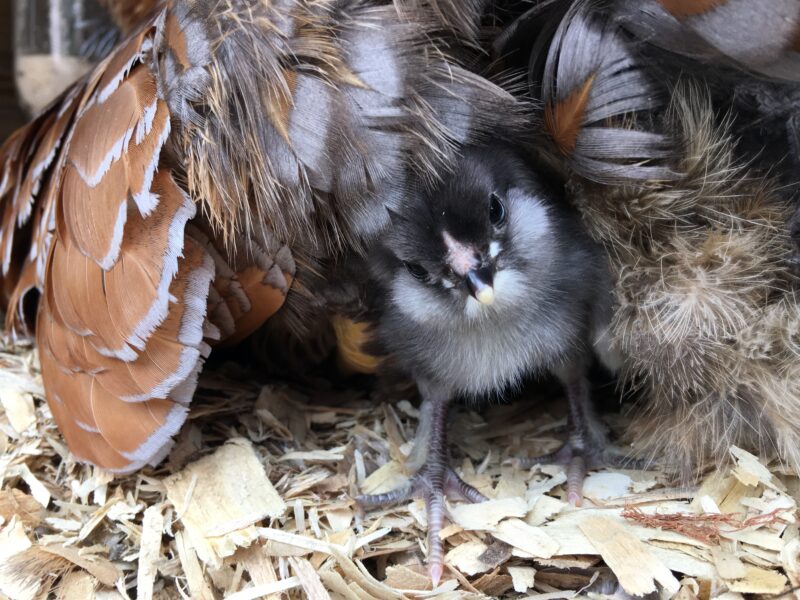
How can I tell if an egg is fertilized?
Other than having the potential for developing into a chick, there is no difference. There is no difference in taste or nutritional quality, and you can’t tell from the outside. When you crack open any egg (fertile or not), in the yolk you will notice a small white dot called a blastodisc. In a fertilized egg, the small white dot will have a small bull’s eye ring around it and is now called a blastoderm.
Normal egg conditions that don’t indicate fertility
Red spots or blood spots
This does not indicate fertility, it is just a broken blood vessel. This is safe to eat and the occasional blood spot is normal. The very earliest chick development at day four looks like veining, not spots.
White stringy “things”
Some people think this is an umbilical cord, but it is not. It is called a chalaza and is a rope-like structure that helps keep the yolk suspended in the egg so it isn’t banging against the shell. The chalaza is more prominent in farm fresh eggs. As eggs age, the chalaza begins to dissolve so you are less likely to notice these in store-bought eggs. It is totally safe to eat.
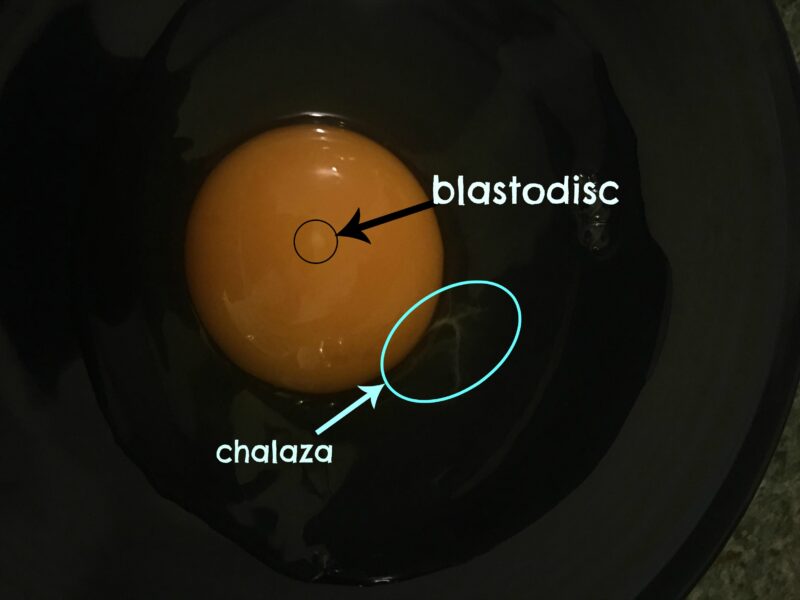
Bottom Line
If you are buying commercial eggs from the grocery store, it is very highly unlikely you would ever find a partially developed or developing chick in your egg. Commercial egg farms only keep female hens so there would be no chance of them getting fertilized.
Even if some rogue rooster were to sneak in, the eggs at US egg farms are supposed to be collected every day, washed, and refrigerated so development would not have a chance to start.
Suppose you found a partially developed chick in a commercial egg farm egg, that would be very concerning. The hens are not being adequately checked on if a mature rooster is hiding among them. It also means the eggs are not being collected & processed often enough.
If you are eating eggs from a local small farmer or from your own backyard hens, even if a rooster is present, as long as eggs are collected daily, you do not need to worry about cracking open an egg and having a chick pop out.

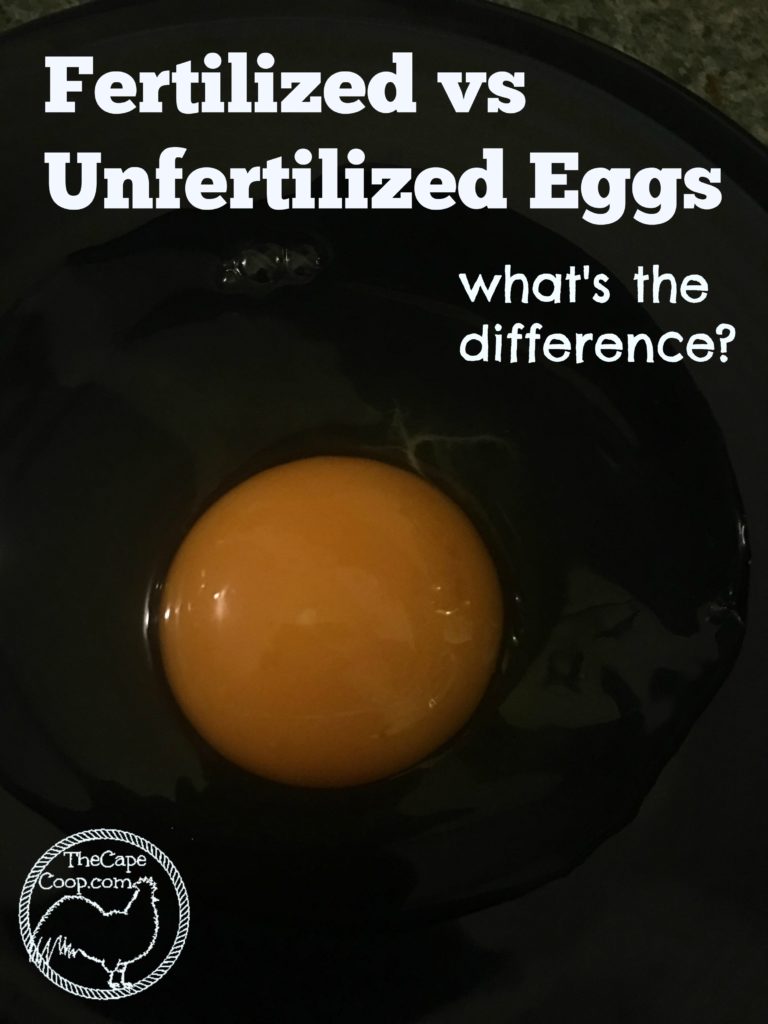

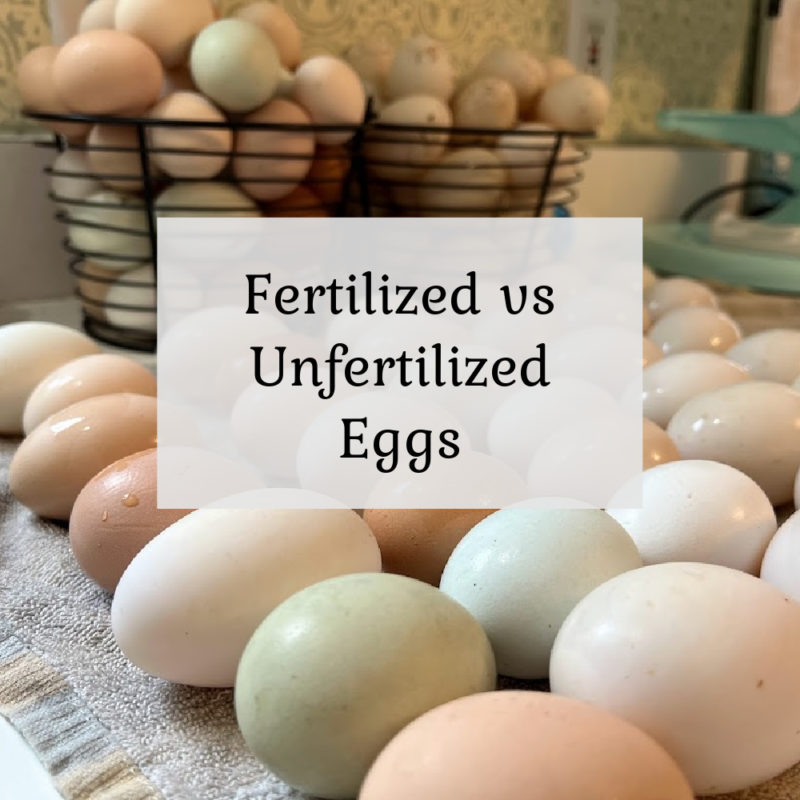

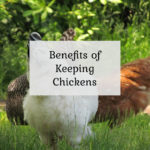


Dominion
Tuesday 22nd of November 2022
Thank you so much for this post. It is very informative, especially as I am starting a parent stock farm, and will be selling fertilized eggs. I appreciate you.
Liz
Wednesday 23rd of November 2022
I am so glad I could help!
Brenda Bourdon
Friday 6th of August 2021
I have gotten a few farm fresh eggs that had the yolk stuck to the inside of the shell when cracked open. The yolk then ran when put in a bowl. Not the nice ball I was expecting. Smelled ok but was wondering if they are safe to eat.
Liz
Friday 6th of August 2021
That is very strange. Two things come to mind that might cause something like that. If the eggs is very old (like over 3 months), the chalaza has dissolved, "untethering" the yolk so it's more just free floating. If it had been refrigerated the whole time it's possible that it still would have been "good" with no off smell. The other possibility that comes to mind is perhaps the egg for some reason had been really shook up, the yolk could weaken with repeatedly hitting the inside of the shell. Other than that I'm a little stumped, that isn't an issue I've encountered before!
Kat
Sunday 16th of May 2021
I don’t know. Maybe that’s it. I actually feel foolish, because I never really thought about it before! I just... gather my girl’s eggs, and assumed that some, would sometimes lay more than one. But this one girl, Sadie, is the only one I can say with absolute certainty, will lay more than one in a day. I never realized it was unusual or special, lol. #newbieissues
Kat
Wednesday 12th of May 2021
Very good article, thank you! Just wanted to add, though, that a chicken CAN lay more than one egg per day. One of our girls at times, lays two in a sitting. She was an adult when we took her in, and we all had to sit around waiting for her, because she’d decided to lay right as we were about to leave. She laid one there in the nest, and then we collected her, put her in a crate and drove an hour home. When we got home, she had laid a second one. She goes a few days between laying, but when she does, we can expect two. :)
Liz
Friday 14th of May 2021
wow! I have never heard of such a thing! I'm not sure how her body would accomplish that. Maybe she releases two ovas at one time, like twins?
Hamish
Tuesday 3rd of November 2020
I have a rooster. Would eggs have a longer shelf life if they are unfertilized? Should I get rid of the rooster?
Liz
Tuesday 3rd of November 2020
Fertilization should not effect the shelf life at all. As long as you are collecting eggs every single day, you won't notice any difference in taste, color, consistency, freshness. Feel free to keep your rooster! They are great for keeping predators away